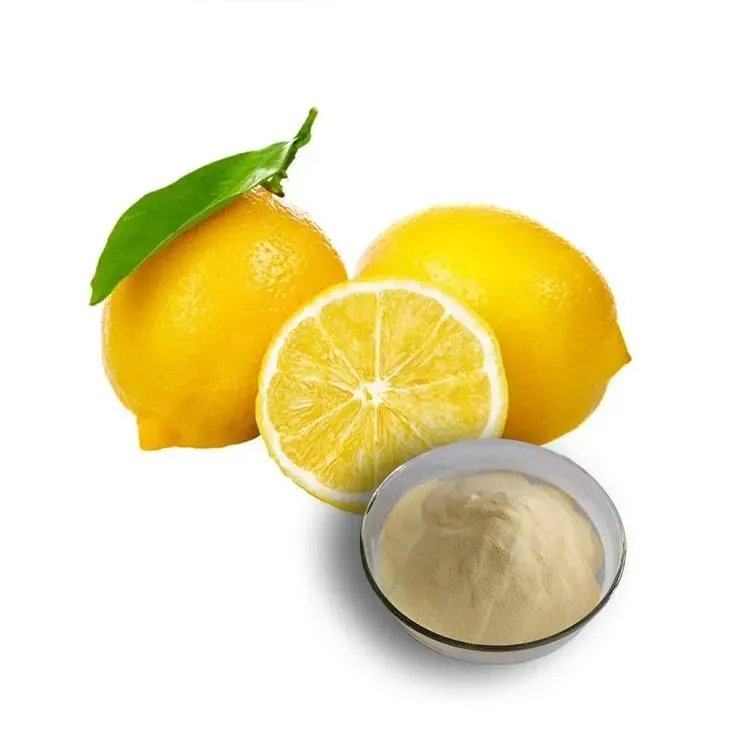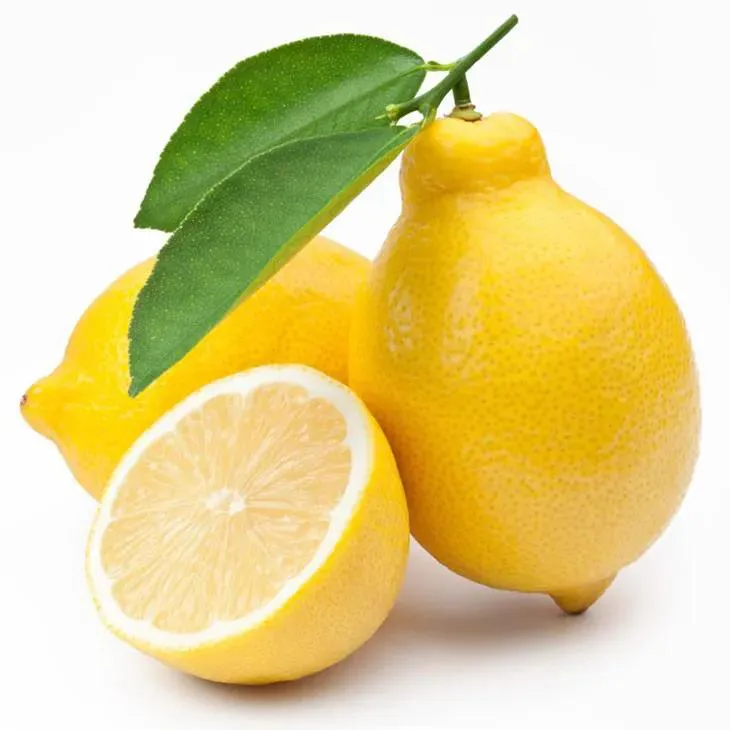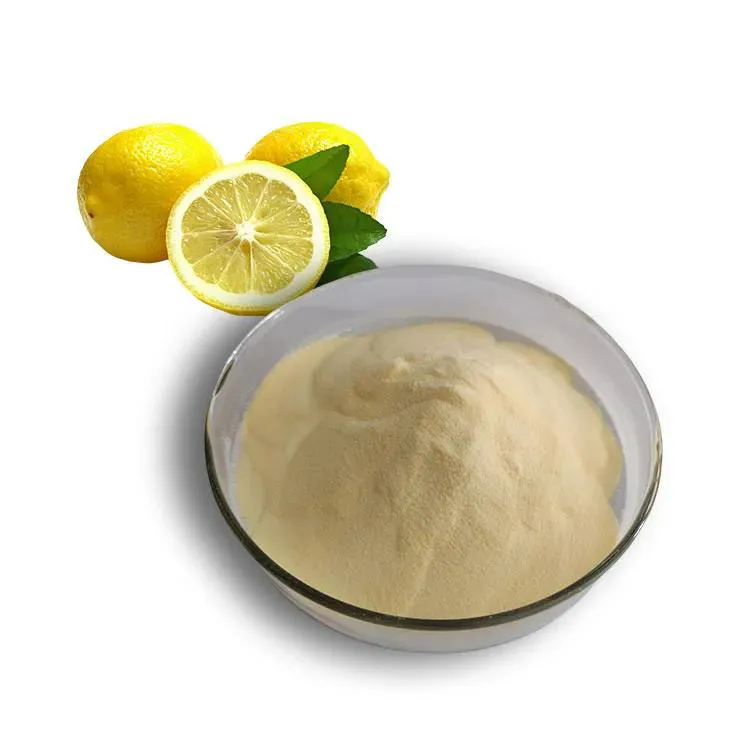- 0086-571-85302990
- sales@greenskybio.com
The process of extracting citric acid from lemon juice powder.
2024-11-29

1. Introduction
Citric acid is a widely used organic acid with numerous applications in the food, beverage, pharmaceutical, and cosmetic industries. Lemon juice is a natural source of citric acid, and Lemon Juice Powder can be a convenient starting material for its extraction. Understanding the process of extracting citric acid from Lemon Juice Powder is not only important for academic research but also has significant implications for industrial production.

2. Preparation of Lemon Juice Powder Sample
2.1 Quality Assessment
- Before starting the extraction process, it is essential to assess the quality of the lemon juice powder. This includes checking for factors such as purity, moisture content, and the presence of any contaminants.
- The powder should be free from any foreign substances that could interfere with the extraction process or contaminate the final citric acid product.
- Proper sampling techniques must be employed to ensure that the sample is representative of the entire batch of lemon juice powder. This may involve taking multiple samples from different parts of the powder container and mixing them thoroughly.
- The amount of sample taken should be sufficient for the extraction process while also taking into account any potential losses during the various extraction steps.

3. Dissolution of Lemon Juice Powder
3.1 Solvent Selection
- The choice of solvent is crucial for the successful dissolution of lemon juice powder. Water is a common and effective solvent due to the water - soluble nature of many of the components in lemon juice, including citric acid.
- However, in some cases, a combination of water and other solvents such as ethanol may be used to improve the solubility of certain components or to selectively dissolve different substances.
- The temperature and agitation rate play important roles in the dissolution process. Generally, a slightly elevated temperature can enhance the dissolution rate, but it should not be too high to avoid degradation of the citric acid or other components.
- Agitation, such as stirring or shaking, helps to ensure that the powder is evenly dispersed in the solvent and that all soluble components are effectively dissolved.

4. Filtration
4.1 Purpose of Filtration
- After dissolution, filtration is necessary to remove any insoluble solids from the solution. These insoluble materials may include undissolved powder particles, cell debris, or other impurities.
- Removing these insoluble substances helps to obtain a clear solution that is more suitable for subsequent purification steps.
- There are several filtration methods available, such as gravity filtration, vacuum filtration, and membrane filtration.
- Gravity filtration is a simple and cost - effective method, where the solution is allowed to pass through a filter paper or a porous medium under the force of gravity.
- Vacuum filtration, on the other hand, uses a vacuum pump to accelerate the filtration process by applying a negative pressure on the filtrate side of the filter.
- Membrane filtration can be used for more precise separation, depending on the pore size of the membrane, it can remove particles at a very fine scale.

5. Purification Steps
5.1 Ion Exchange Chromatography
- Ion exchange chromatography is one of the effective purification methods for citric acid extraction. It is based on the principle of exchanging ions between the sample solution and a resin matrix.
- The resin used in ion exchange chromatography can be either cation - exchange or anion - exchange resin, depending on the nature of the impurities and the target molecule (citric acid).
- For example, if there are cations that need to be removed, a cation - exchange resin can be used. The resin will exchange its own cations with the cations in the sample solution, effectively removing them.
- Crystallization is another important purification step. It takes advantage of the difference in solubility of citric acid at different temperatures.
- The solution is concentrated by evaporation or other means to reach a supersaturated state. Then, citric acid crystals start to form as the solution cools down or is seeded with citric acid crystals.
- The formed crystals can be separated from the mother liquor by filtration or centrifugation. The purity of the citric acid can be further improved through multiple crystallization cycles.
6. Drying of the Extracted Citric Acid
6.1 Purpose of Drying
- After purification, the citric acid is usually in a wet or semi - wet state. Drying is necessary to remove the remaining moisture and obtain a dry, stable product.
- A dry citric acid product has a longer shelf - life and is more suitable for storage, transportation, and various applications.
- There are several drying methods available, such as air drying, oven drying, and freeze - drying.
- Air drying is a simple method where the citric acid is exposed to air at a suitable temperature and humidity until the moisture is removed. However, this method may be relatively slow and may not be suitable for large - scale production.
- Oven drying involves placing the citric acid in an oven at a controlled temperature. This method can be more efficient but requires careful control of the temperature to avoid over - drying or degradation of the citric acid.
- Freeze - drying, also known as lyophilization, is a more advanced drying method. It involves freezing the citric acid solution first and then removing the water by sublimation under reduced pressure. This method can preserve the quality of the citric acid better but is also more expensive.
7. Characterization of the Extracted Citric Acid
7.1 Chemical Analysis
- Chemical analysis is carried out to determine the purity and composition of the extracted citric acid. Methods such as titration can be used to determine the exact amount of citric acid present in the sample.
- Other techniques like high - performance liquid chromatography (HPLC) can be employed to identify and quantify any remaining impurities or by - products in the citric acid product.
- The physical properties of the extracted citric acid, such as its melting point, solubility, and crystal structure, are also important to characterize.
- These physical properties can provide valuable information about the quality and suitability of the citric acid for different applications. For example, the solubility of citric acid in different solvents can affect its use in formulation development.
8. Applications of the Extracted Citric Acid
8.1 Food and Beverage Industry
- Citric acid is widely used in the food and beverage industry as an acidulant, flavor enhancer, and preservative.
- It can be added to soft drinks, juices, jams, and candies to provide a sour taste and enhance the flavor. It also helps to prevent the growth of microorganisms, thereby extending the shelf - life of food products.
- In the pharmaceutical industry, citric acid is used in various formulations. It can be used as an excipient in tablets and capsules to improve the dissolution rate of drugs.
- It also has antioxidant and chelating properties, which can be beneficial in some pharmaceutical preparations.
- Citric acid is used in the cosmetic industry for its pH - adjusting and exfoliating properties. It can be added to skin care products such as creams, lotions, and scrubs to adjust the pH to a suitable level for the skin.
- As an exfoliant, it helps to remove dead skin cells, leaving the skin smoother and more radiant.
9. Conclusion
The process of extracting citric acid from lemon juice powder involves multiple steps, from sample preparation to final product characterization. Each step is crucial for obtaining a high - quality citric acid product. The wide applications of citric acid in various industries make this extraction process not only academically interesting but also commercially important. Continued research in this area can lead to more efficient and sustainable extraction methods, further enhancing the value of lemon juice powder as a source of citric acid.
FAQ:
What are the initial steps in preparing the lemon juice powder sample for citric acid extraction?
The initial steps may involve ensuring the powder is free from contaminants and properly measured. It might also require pre - treatment such as sieving to get a uniform particle size, which can affect the subsequent dissolving process.
Which chemical methods are typically used in the purification steps?
Common chemical methods in purification include precipitation reactions. For example, adding certain chemicals that react with impurities to form insoluble compounds that can be removed. Another method could be ion - exchange chromatography which helps in separating different ions present in the solution.
How important is the dissolving process in the extraction of citric acid from lemon juice powder?
The dissolving process is very important. It is the first step to make the citric acid present in the lemon juice powder accessible for further separation and purification. If the powder does not dissolve properly, it can lead to incomplete extraction and lower yields of citric acid.
What are the main applications of the extracted citric acid?
The extracted citric acid has various applications. It is widely used in the food and beverage industry as an acidulant, flavor enhancer, and preservative. In the pharmaceutical industry, it can be used in the formulation of drugs. It also has applications in the cosmetic industry, for example, in skin care products as a pH adjuster.
What factors can affect the efficiency of citric acid extraction from lemon juice powder?
Several factors can affect the extraction efficiency. The quality and composition of the lemon juice powder, the temperature and pH during the extraction process, and the effectiveness of the purification steps. Also, the type and concentration of solvents used in the dissolving process can play a role.
Related literature
- Title: Advanced Techniques in Citric Acid Extraction from Natural Sources"
- Title: "The Chemistry of Citric Acid and Its Extraction Processes"
- Title: "Optimizing the Extraction of Citric Acid from Fruit - Based Powders"
- ▶ Hesperidin
- ▶ citrus bioflavonoids
- ▶ plant extract
- ▶ lycopene
- ▶ Diosmin
- ▶ Grape seed extract
- ▶ Sea buckthorn Juice Powder
- ▶ Beetroot powder
- ▶ Hops Extract
- ▶ Artichoke Extract
- ▶ Reishi mushroom extract
- ▶ Astaxanthin
- ▶ Green Tea Extract
- ▶ Curcumin Extract
- ▶ Horse Chestnut Extract
- ▶ Other Problems
- ▶ Boswellia Serrata Extract
- ▶ Resveratrol Extract
- ▶ Marigold Extract
- ▶ Grape Leaf Extract
- ▶ blog3
- ▶ blog4
-
The best organic chia seed powder.
2024-11-29
-
The extraction process of Maca extract.
2024-11-29
-
Organic Motherwort Extract Powder Supplier.
2024-11-29
-
The Pure Vitamin K2 Most Worth Buying.
2024-11-29
-
Chinese Hawthorn Extract Powder Suppliers.
2024-11-29
-
The best Tongkat Ali extract in nature.
2024-11-29
-
Alisma Extract
2024-11-29
-
Acai Berry Extract
2024-11-29
-
Ivy Extract
2024-11-29
-
Feverfew Extract
2024-11-29
-
Genistein
2024-11-29
-
Polygonum Cuspidatum Extract
2024-11-29
-
Echinacea Extract
2024-11-29
-
Black Garlic Extract
2024-11-29
-
Cassia Seed Extract
2024-11-29
-
Horse Chestnut Extract
2024-11-29





















